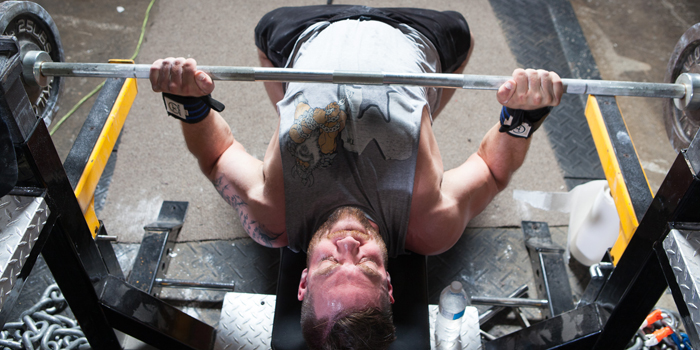
On March 17th, Ohio gyms closed due to COVID-19. It's been over eight weeks since the closure, and on May 26th, gyms reopened. In the beginning of the lockdown, I made the commitment that I would train every single day (and I'm at the eight and a half week mark at the time of writing this article). My equipment was limited, so my training was simple, and the sessions were kept fairly short. I outlined my approach at the beginning of lockdown in my article How to Safely Train Every Day During Quarantine.
After eight weeks of training every morning, and approaching the reopening of gyms (and a shift to a more normal training routine that includes a barbell), I've been reflecting on the past few months of training and what I may continue even after lockdown ends.
Normally I've trained four days a week, and outside of walking my dog (which is a pretty good workout), I don't do any other sort of formal training on the other days outside of the gym. Short workouts every morning before work has shown me the mental and physical benefits of training more frequently. The clearing of my head in the mornings has helped my anxiety and mood during a time where stress has been high, taking over as general manager of a community center with multiple different levels of operations effected by the lockdown. Inevitably throughout the past eight weeks, I had days I didn't want to train, but even a simple 30-45 minute workout was worth pushing through, and I was always glad I disciplined myself to do it.
PART 1: How to Safely Train Every Day During Quarantine
The physical benefits have been two-fold. I have been able to put on a few pounds of solid bodyweight with the increased frequency and hypertrophy work while doing more conditioning than I've done in a while. With doing lower impact movements, I'm able to do these movements more frequently and stimulate muscle growth more often without as much risk for injury and joint damage. As I outlined in the article mentioned above, I alternated upper and lower body training each day. Upper body days often consisted of chin-ups, push-ups, and then a combination of other upper back, shoulder, and arm movements. Lower body training typically focused on either dumbbell squats or band RDLs, abs, and then running stairs in my weight vest. Some days I focused solely on the stair running at a higher volume and didn't do any other types of movements. This addition of conditioning every other day has made a big difference for my body composition, stress levels, and overall health. It's hard for me to go running or do a lot of normal types of cardio (partially because of my joints and partially because I just don't like it), but running stairs or hitting the heavy bag are things I enjoy doing more so I focus on those. I also can't state enough the benefit of owning a good weight vest; I lived in it during lockdown training, and it helped a ton with having limited equipment.
As I transition to doing heavier barbell work again, I will adjust the other days of my training to accommodate the higher impact movements and increased intensity. I do, however, want to keep doing something every day when I can. The increased frequency of low-impact movements and conditioning benefited me. Many coaches and lifters have discussed the benefit of extra/recovery workouts for years. For me, it just took finding an efficient way to do it, and lockdown training from home gave me a way to do that.
My tentative plan is to put my heavier main barbell days on the weekend (when I have more time and am typically not working in my office). During the week, I'll continue with my shorter, low-impact hypertrophy work and conditioning before work. This combination should make training during the week easier with my schedule while taking advantage of increased frequency and conditioning. This training setup will also allow me to train at home during the week and not have to worry about navigating the tricky post-lockdown gym crowds/schedules right off the bat.
My original plan pre-COVID was to compete in powerlifting again this Fall. So over the next few months, I'll be considering my timeline for competing this year. My initial thought is to tentatively shoot for a winter meet, which will give me time to adjust training back to barbell work and evaluate how my work and training schedules mesh in the coming months.
As I transition from lockdown training to a hybrid training program as gyms reopen, I will clarify how these strategies evolve and will detail them in another article as things settle. If you're coming from a barbell layoff like I am, I recommend transitioning slowly back into barbell work and being patient (as difficult as it is). I plan on taking 90 percent of my previous training max (which is already 90 percent of my true max) to calculate my numbers off of and build up every wave from there. Don't stress about your numbers or how the weight feels. Start chipping away and building momentum slowly. Before you know it, you'll be hitting PRs again, trust me. If you have new strategies you learned from lockdown that you plan on using, I'd be interested to hear what they are in the comments below.










